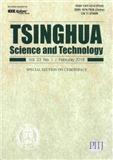
清华大学学报自然科学版(英文版)(Tsinghua Science and Technology) 万方目次维普目次
- CSCD
- 科核
- EI(中国2024)
- 主管单位:
教育部
- 主办单位:
清华大学
- 国际刊号:
1007-0214;EISSN1878-7606
- 国内刊号:
11-3745/N
- 学科分类:
- 字数:
10000-58000
- 有无基金:
/有基金 100.0%
- 周期:
CN外文-双月刊
- 特殊属性:
第一批认定学术期刊,外文期刊
- 电话:
010-83470494(202401;010-83470493(官网电话)
- 邮箱:
journal@tsinghua.edu.cn(202401期)
- 复合因子:
1.985
- 综合因子:
1.114
- 收录:
万方目次,维普目次
- 级别:
CSCD,科核,EI(中国2024)
期刊简介
《清华大学学报自然科学版》期刊已被查看: 次
更新频次
单位占比
一作占比
/有基金-100.0%投稿指南
1、投稿方式:在线投稿。
2、刊内网址:(202401期)
https://www.sciopen.com/journal/1007-0214
http://ieeexplore.ieee.org/xpl/RecentIssue.jsp?punumber=5971803
3、投稿系统:https://mc03.manuscriptcentral.com/tst
4、刊内邮箱:journal@tsinghua.edu.cn
5、刊内电话:010-83470494
官网电话:010-83470556
6、出刊日期:双月刊,逢双月出版。
2024年5月8日星期三
《清华大学学报自然科学版(英文版)》投稿指南
【官网信息】
Submission Guidelines
Information for Authors
Tsinghua Science and Technology (Tsinghua Sci Technol), an academic journal sponsored by Tsinghua University, is published bimonthly. This journal aims at presenting the up-to-date scientific achievements with high creativity and great significance in computer and electronic engineering. Contributions all over the world are welcome. Tsinghua Sci Technol is indexed by SCI, Engineering index (Ei, USA), INSPEC, SA, Cambridge Abstract, and other abstracting indexes.
Manuscripts are selected for publication according to the editorial assessment of their suitability and evaluation from independent reviewers. Papers are usually sent to two or more reviewers including one reviewer out of China. Editorial staff will edit accepted papers to improve accuracy and clarity and shorten, if necessary.
It is a condition of publication that manuscripts submitted to this journal have not been published and will not be simultaneously submitted or published elsewhere.
Manuscript submission The electronic manuscript should be sent to the editorial board through ScholarOne Manuscripts at http://mc03.manuscriptcentral.com/tst.
Title and By-line The title should be descriptive, not full sentences. Name, affiliation (institution) of the authors, city, zip code, country, E-mail address, and telephone number of the author(s) should be listed.
Authorship Authorship should be limited to those who have made a significant contribution to the conception, design, execution, or interpretation of the reported study. All those who have made significant contributions should be listed as co-authors. Where there are others who have participated in certain substantive aspects of the research project, they should be named in an Acknowledgement section. The corresponding author should ensure that all appropriate co-authors (according to the above definition) and no inappropriate co-authors are included in the author list of the manuscript, and that all co-authors have seen and approved the final version of the paper and have agreed to its submission for publication. After acceptance, changes of authorship or in the order of the authors listed will not be accepted by Tsinghua University Press.
Abstract and Key words The abstract of about 100-150 words must accompany each article on page one. It should be a concise summary of the aims, methods, results, and conclusions and/or other significant items in the paper. Together with the title, it must be adequate as an index to all the subjects treated in the paper, and will be used as a base for indexing. Avoid displayed mathematical expressions. Define all nonstandard symbols and abbreviations. Do not use footnote indicators. If a reference must be made, include it in square brackets. Summarize the experimental or theoretical results, the conclusions, and/or other significant items in the paper. If space permits, include any important new quantitative data. Summarized results should be exact, direct, and specific. The key words should include 3-8 pieces of words or phrases to serve as guidelines for indexing.
Text The text should contain an Introduction that puts the paper into perspective for readers, and should also contain Methods, Results, Discussion, and Conclusions. The SI system should be used for units of measure throughout the text.
Each caption should be written as a single brief paragraph without indentation. Figures and tables should be consecutively numbered with Arabic numerals. Tables should be drawn with three horizontal lines, at the top and bottom of the table and between the column headings and the table body.
Good quality figures have the following characteristics. They have lines, letters, numbers, and symbols of uniform strength and contrast. Figures (except photographs) are often reduced to 7 cm×7 cm. The final thickness of a line in a figure usually lies within the range 0.15-0.20 mm. When preparing the figures, authors should pay attention to the widths of lines and similar details, as some (e.g. dotted or thin lines) may disappear after reduction. Particular attention should be paid to line strengths in graphics prepared in vector formats.
Mathematical material The text should make clear distinctions between physical variables, mathematical symbols, units of measurement, abbreviations, chemical formulas, etc. Authors should use italic and boldface to identify physical or mathematical variables. Variables are to be set in normal italic, and vectors, tensors, and matrixes in boldface.
Acknowledgment Individuals, affiliation, or other to be concerned who were of direct help in the work should be acknowledged by a brief statement.
References Only essential references (formally published journals, articles, monographs, dissertations, reports, proceedings, standards, patents, and/or electronic publications) cited in the text can be listed and must be numbered consecutively by Arabic numerals, which should be listed in the same order as cited in the text. There should be at least ten references.
Open Access The articles published in this journal are distributed under the terms of the Creative Commons Attribution License which permits any use, distribution, and reproduction in any medium, provided the original author(s) and source are credited.
Ownership The articles published in Tsinghua Sci Technol cannot be published anywhere in any form without the written permission from Tsinghua University Press.
APCs
Important update regarding the submission process for Tsinghua Science and Technology.
Articles submitted since January 1, 2024, will incur an Article Processing Charge (APC) to be paid by the author(s) or funder(s) upon acceptance for publication. This decision has been made to support the increasing costs of maintaining high-quality publication standards and to further invest in the technological infrastructure of the journal.
Key Details:
·Effective Date: The APC will be applicable for all articles submitted and accepted from January 1, 2024, onwards.
·The current APC, subject to VAT or local taxes where applicable, is: £1500.00 /$1850.00 /€1700.00 /CNY13 000.00.
·Charge Structure: The APC paid by the author(s) or funder(s) contributes to supporting the extensive work involved in editorial review, peer review and publishing process. This ensures the reliability of research and helps accelerate progress for society.
·Waiver Policy: We are committed to ensuring that financial constraints do not impede the dissemination of valuable research. A waiver policy will be in place for authors who are unable to afford the publication fees in developing countries. If an author group is unable to cover the APC for publishing an article and can demonstrate a lack of research funding, we will consider individual waiver requests on a case-by-case basis.
We understand that this is a significant change and we are dedicated to making this transition as smooth as possible. Our team is available to answer any questions or concerns you may have regarding this update.
上一篇:沈阳师范大学学报(自然科学版)下一篇:地质与资源(原:贵金属地质)
《清华大学学报自然科学版》同类本科学报期刊
-
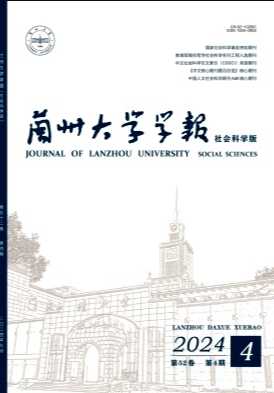
兰州大学学报(社会科学版)(不收版面费审稿费)
C刊,北核,科核,AMI核心,武A,国社科-合格
CN中文-双月刊影响因子1.987
-
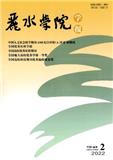
丽水学院学报
AMI入库,武B+,CACJ-扩展
CN中文-双月刊影响因子0.394
-
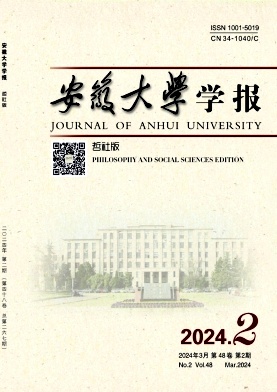
安徽大学学报(哲社版)(原:安徽大学学报(哲学社会科学版)(不收版面费审稿费)
C刊,北核,AMI核心,武A
CN中文-双月刊影响因子2.657
-
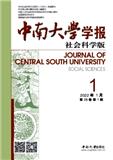
中南大学学报(社会科学版)
C刊,北核,AMI核心,武A
CN中文-双月刊影响因子2.158
-
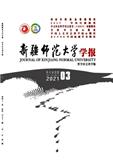
新疆师范大学学报(哲学社会科学版)(不收版面费审稿费)
C刊,北核,科核,武A+,AMI核心,国社科-优秀
CN中文-双月刊影响因子7.994
-
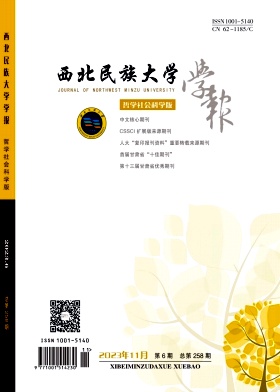
西北民族大学学报(哲学社会科学版)(不收版面费审稿费)
北核,C扩,武A,AMI扩
CN中文-双月刊影响因子1.65
-
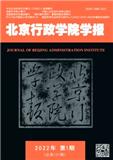
北京行政学院学报(不收版面费审稿费)
C刊,北核,科核,AMI核心,武A
CN中文-双月刊影响因子2.742
-
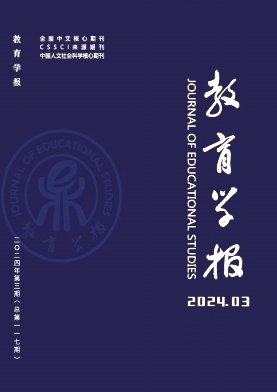
教育学报(原:学科教育)(不收审稿费版面费)
C刊,北核,科核,AMI核心,武A
CN中文-双月刊影响因子2.472
常见问题
-
清华大学学报自然科学版杂志社官网、联系方式是什么?
清华大学学报自然科学版杂志社官网:https://www.sciopen.com/journal/1007-0214
投稿网址:https://mc03.manuscriptcentral.com/tst联系电话:010-83470494(202401;010-83470493(官网电话)
投稿邮箱:journal@tsinghua.edu.cn(202401期) -
清华大学学报自然科学版杂志是核心期刊么?
清华大学学报自然科学版是核心期刊,级别是:CSCD,科核,EI(中国2024), 是:本科学报分类下的万方目次,维普目次收录的期刊。
-
请问你们是清华大学学报自然科学版杂志社吗?
我们不是《清华大学学报自然科学版》杂志社。本站主要从事期刊信息展示与期刊推荐,不是任何杂志官网,直投稿件请联系杂志社。本站仅提供免费的学术指导、论文辅导、期刊投稿信息整理收集服务。
-
你们指导服务后可以保证文章被发表吗?
期刊发表的成功与否,主要取决于文章内容的质量。编辑老师会根据研究领域、创新性等多因素进行考量。我们会帮助您理解期刊的发表要求,助力提升发表几率,从而增加发表的机会。
-
晋级论文能否在报纸上发表?
在学术界,论文的发表往往被视为研究者职业发展的重要一环。晋级论文,即为了获得更高职称或学术地位而撰写的学术论文,通常需在专业期刊上发表。然而,许多人可能会问
